
Birds and Springtime
February 26, 2006
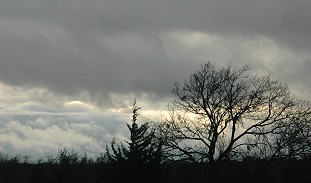 |
|
| Most of the week we had gray weather with fog, drizzle, and finally--on Saturday--some actual rain. This was frustrating when I had new camera equipment I wanted to try out--but didn't dare get wet. Still, we need every drop of rain. | |
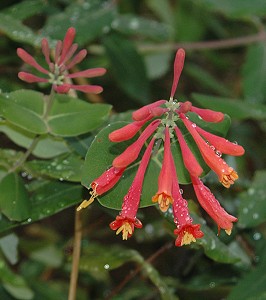 |
|
| Coral honeysuckle starts blooming in January. It's native to this area, and hummingbirds love it. This vine is climbing on the front porch, but there's a big one down in the west woods. | |
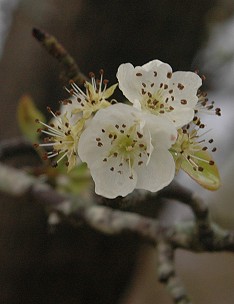 |
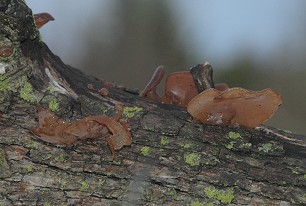 |
| Despite the ice storm last weekend, the pear continued to flower. It's not quite in full bloom yet, but it's close. | Unfortunately, one branch of this tree is sprouting a fungus in a line that runs from the crotch where the limb leaves the trunk all the way out. Although that branch is flowering, I have a feeling that it's doomed. This fungus is rubbery and smooth to the touch. |
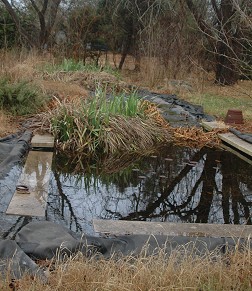 |
|
| Another clear sign of spring: this was frozen over last weekend, but you can see that the water iris is already green; so is the rosemary near the pond, and some of the grass in the yard. This was taken on Saturday afternoon, in a break between wet patches, and shows the pool overfull of rainwater...wonderful for the tadpoles. | |
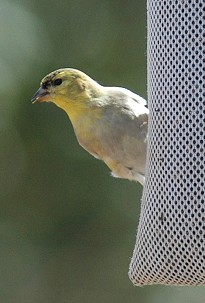 |
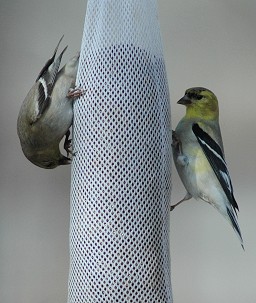 |
| On the one day we had sun, I went out with my new equipment: a 1.4 teleconverter to use with the 300mm f4 lens. It gives me the equivalent of a 400mm f5.6 if I understand all the figures. I had hung a new thistle-seed sock in the back yard and got this picture of an American goldfinch beginning to show his spring colors. | Here the same male and a female are on the sock together. When I watched out the window, I saw as many as four goldfinches and a house finch on the sock, but when I was in the back yard, they wouldn't cluster like that. |
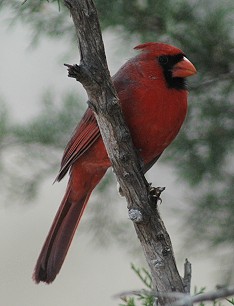 |
|
| Up at Fox Pavilion, I tried out the new rig in the place I've taken the most pictures. It made a huge difference, though I'd have liked a brighter day (the sun had gone in again.) It may not show in the small-size pictures, but the image of the bird takes up more of the total image, which means there are more pixels to play with. | |
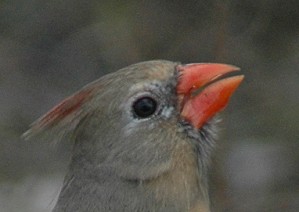 |
|
| I've been watching this female cardinal all winter with some concern. She lost the feathers around her eye toward the end of the nesting season, and has been obviously different from the other female cardinals here since--that gray-white skin around her eye really shows up. The other side of her bill has a worn-looking area, as if she's old. I was glad to see that the feathers are beginning to grow in again just under her eye. | |
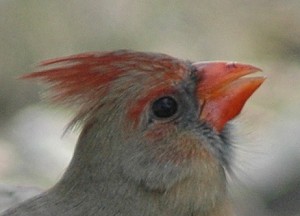 |
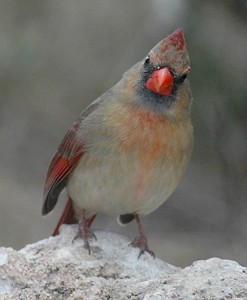 |
| This cardinal shows so much red on breast and face that I wonder if it's an immature male, or just a very colorful female. | If it's a male, it should come into its full red color this spring...so I'll keep taking pictures whenever I see it. |
![]()

